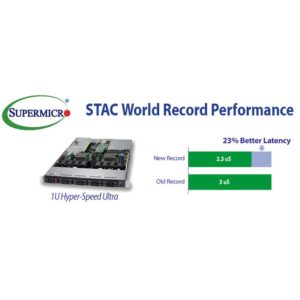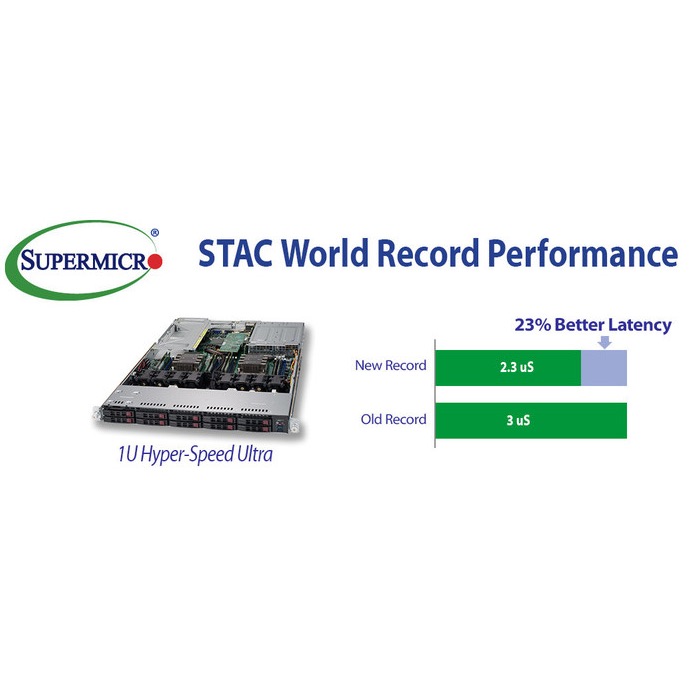 Today Supermicro announced a new world record for lowest latency on the well-known STAC-N1 benchmark. STAC-N1 measures the performance of a host network stack using a market data style workload.
Today Supermicro announced a new world record for lowest latency on the well-known STAC-N1 benchmark. STAC-N1 measures the performance of a host network stack using a market data style workload.
For Hyper-Speed servers, Supermicro continues to lead the way with innovative new servers that push performance to the limits with advanced optimizations that fully leverage the latest processors, network interfaces and NVMe flash storage,” said Charles Liang, President and CEO of Supermicro. “With our latest generation of Hyper-Speed Ultra Servers optimized for high-frequency trading and related financial analysis applications, Supermicro has significantly improved the latency performance to provide customers with the fastest systems in the world. These new Hyper-Speed solutions not only maximize performance by introducing Hyper-Turbo mode but also provide enterprise class reliability for mission critical applications.”
This benchmark was performed on a pair of Supermicro SYS-1029UX-LL1-S16 servers, each with dual 8-core Intel Xeon Scalable 6144 (Gold) processors overclocked at 4.18GHz. The servers were also loaded with Red Hat’s Red Hat Enterprise Linux 7.5 operating system and Solarflare X2522 Adapters. Compared to all prior publicly released STAC-N1 results, the bare metal system demonstrated the lowest mean latency of 2.3 microseconds at both the base rate (100k messages per second) and the highest rate tested (1 million mps).
Linux is an operating system of choice when it comes to extreme workloads, and Red Hat Enterprise Linux is the foundation for many deployments of this nature,” said Craig Muzilla, senior vice president, Core Products and Cloud Services Business Group, Red Hat. “Through our collaboration with Solarflare and Supermicro, we’re pleased to have provided the platform for the most recent STAC-N1 benchmark, setting a world record in the process.”
“The STAC N1 test results represent two important milestones for the industry,” said Ahmet Houssein, vice president of marketing at Solarflare. “First, we have proven it’s possible to virtualize using containers for high-performance applications such as electronic trading. In addition, the results show that Kubernetes and container, or cloud-based networking, performs efficiently under extreme scale environments, and is the future of application development. We applaud the work of Supermicro, Red Hat and our team in achieving these results and look forward to future collaborations.”




